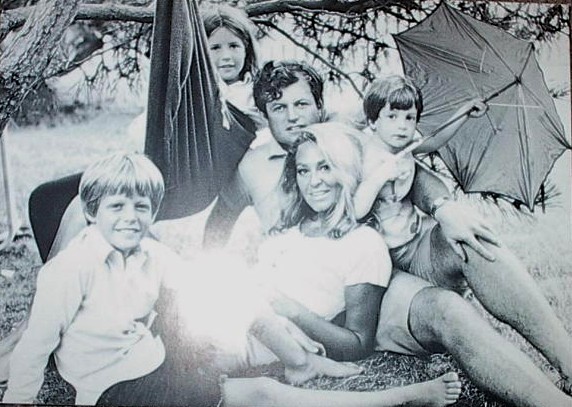In a small, private ceremony in November at Arlington Cemetery, members of the Kennedy family watched as an unusual but heartfelt item was placed on President John F. Kennedy's grave: a simple, bracelet-size ring made of cream-colored shell, sent by an elderly man who lives on a remote island halfway across the world.
Why the fuss? Because without Eroni Kumana, the man who asked that the item be placed on the grave, Jack Kennedy, the young PT boat captain, might have not made it back from World War II.
Kumana was one of two Solomon Islanders who helped rescue Kennedy and his crew after his boat, PT-109, had been rammed and sunk by a Japanese destroyer.
When the destroyer smashed into the small boat in the early morning hours of Aug. 2, 1943, two crewmen died. Kennedy, then 26, led his remaining 10 crew members in a weeklong fight for survival, swimming to a series of tiny, deserted islands.
Kumana and another native, Biuku Gasa, found the men, who had been surviving on coconuts. They took a message from Kennedy written on a coconut husk (an item currently on display in Kennedy Library and Museum in Boston) to the nearest Allied base 35 miles away. A rescue was launched.
Fast-forward more than 60 years. Mark Roche, an investment banker whose hobby is World War II history, traveled to the Solomon Islands in March and, on a whim, looked up Kumana, now 83, who lives on Ranongga Island. After they talked for about an hour, Roche said, he asked if Kumana would like him to place some of the flowers from his yard on Kennedy's grave.
At that point, Roche said in an e-mail to the Kennedy Library, Kumana went into his hut and pulled out the ring of shell, which was a piece of custom money or shell money. The money, carved from a fossilized giant clam shell, could once be used to pay for a bride, buy land, and apply to other purposes in the Solomon Islands.
Kumana's son explained that another traditional use of the custom money was to lay it on a chief's grave.
Roche, 52, of Houston, agreed to lay it on Kennedy's grave for Kumana. After a couple of unsuccessful attempts, he was able to get in touch with the Kennedy family and the ceremony was arranged.
The Kennedys treated Roche with "incredible graciousness," he said. "I was raised in a Nixon household. Honestly, we were raised, sort of, 'We don't like Kennedys.' . . . I take offense against anybody who says a bad thing about a Kennedy now."
The ceremony took place Nov. 1. Those attending included President Kennedy's sister Eunice Kennedy Shriver; his nephew Tim Shriver; and his niece Sydney Lawford McKelvy.
The item is now part of the museum's collection and will one day be displayed next to the coconut husk bearing Kennedy's message, museum officials said.
Kumana was one of two Solomon Islanders who helped rescue Kennedy and his crew after his boat, PT-109, had been rammed and sunk by a Japanese destroyer.
When the destroyer smashed into the small boat in the early morning hours of Aug. 2, 1943, two crewmen died. Kennedy, then 26, led his remaining 10 crew members in a weeklong fight for survival, swimming to a series of tiny, deserted islands.
Kumana and another native, Biuku Gasa, found the men, who had been surviving on coconuts. They took a message from Kennedy written on a coconut husk (an item currently on display in Kennedy Library and Museum in Boston) to the nearest Allied base 35 miles away. A rescue was launched.
Fast-forward more than 60 years. Mark Roche, an investment banker whose hobby is World War II history, traveled to the Solomon Islands in March and, on a whim, looked up Kumana, now 83, who lives on Ranongga Island. After they talked for about an hour, Roche said, he asked if Kumana would like him to place some of the flowers from his yard on Kennedy's grave.
At that point, Roche said in an e-mail to the Kennedy Library, Kumana went into his hut and pulled out the ring of shell, which was a piece of custom money or shell money. The money, carved from a fossilized giant clam shell, could once be used to pay for a bride, buy land, and apply to other purposes in the Solomon Islands.
Kumana's son explained that another traditional use of the custom money was to lay it on a chief's grave.
Roche, 52, of Houston, agreed to lay it on Kennedy's grave for Kumana. After a couple of unsuccessful attempts, he was able to get in touch with the Kennedy family and the ceremony was arranged.
The Kennedys treated Roche with "incredible graciousness," he said. "I was raised in a Nixon household. Honestly, we were raised, sort of, 'We don't like Kennedys.' . . . I take offense against anybody who says a bad thing about a Kennedy now."
The ceremony took place Nov. 1. Those attending included President Kennedy's sister Eunice Kennedy Shriver; his nephew Tim Shriver; and his niece Sydney Lawford McKelvy.
The item is now part of the museum's collection and will one day be displayed next to the coconut husk bearing Kennedy's message, museum officials said.
Go to:


No comments:
Post a Comment